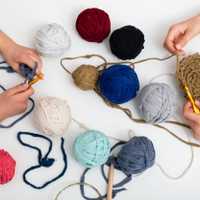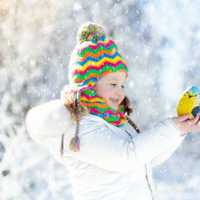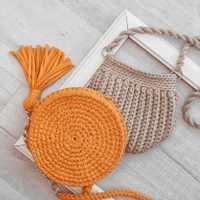Choosing Knitting Needles For Your Project
By E. Sullivan
Choosing Knitting Needles For Your Project
By E. Sullivan
Knitting is an art from using yarn or thread to create various pieces of cloth ranging from sweaters and blankets to gloves and socks. With the use of loops and stitches strung between two needles, the cloth takes shape both by hand and by machine. Different products are made by using various types of yarn and needles, thus creating many colors, textures, and sizes.
Yarn and needles are the only absolute fundamentals of kitting. Many options are available when it comes to choosing a pair of knitting needles. For starters, you may have straight, circular needles, double-pointed, or cable needles. Straight needles are perhaps the most common type of knitting needles and will be used for a majority of basic kitting projects.
There are several things to consider when using knitting needles as well. You will have a variety of different diameters to choose from, and you will want to select the size of the knitting needle based on how small or large you wish your stitches to be. Wider needles will produce larger loops and stitches while smaller ones will give a tighter, more compact stitch.
You will find that knitting needles are generally made out of four common materials, those being metal, wood, plastic, and bamboo. The wood and bamboo needles are rougher, therefore offering more traction and ensuring you are less likely to drop stitches. Plastic needles are not often very sturdy and probably should not be the first choice. Metals needles are great for smooth, quick knitting as the yarn will slide much easier over the surface.
Straight needles are most often used for flat knitting such as blankets or scarves. They produce straight, even rows. Circular knitting needles, long and flexible with a double point, are used for flat or circular knitting. Straight double-pointed needles are also used for circular knitting but used to achieve a smaller tube such as for a collar or sock.
There are a few accessories which will make one's life easier as they begin knitting. It is wise to have a protective case for all of your knitting needles to keep the set together and the point sharp. There you may also store something known as a needle gauge which will help you determine the size of each knitting needle.
Emily is a knitting enthusiast who loves to shop with the friendly people at Knitch for all of her knitting items, especially knitting needles. Visit Knitch Knitting at http://www.shopknitch.com/ for more tips, patterns, and local classes.
Article Source: http://EzineArticles.com/?expert=E._Sullivan
Knitting is an art from using yarn or thread to create various pieces of cloth ranging from sweaters and blankets to gloves and socks. With the use of loops and stitches strung between two needles, the cloth takes shape both by hand and by machine. Different products are made by using various types of yarn and needles, thus creating many colors, textures, and sizes.
Yarn and needles are the only absolute fundamentals of kitting. Many options are available when it comes to choosing a pair of knitting needles. For starters, you may have straight, circular needles, double-pointed, or cable needles. Straight needles are perhaps the most common type of knitting needles and will be used for a majority of basic kitting projects.
There are several things to consider when using knitting needles as well. You will have a variety of different diameters to choose from, and you will want to select the size of the knitting needle based on how small or large you wish your stitches to be. Wider needles will produce larger loops and stitches while smaller ones will give a tighter, more compact stitch.
You will find that knitting needles are generally made out of four common materials, those being metal, wood, plastic, and bamboo. The wood and bamboo needles are rougher, therefore offering more traction and ensuring you are less likely to drop stitches. Plastic needles are not often very sturdy and probably should not be the first choice. Metals needles are great for smooth, quick knitting as the yarn will slide much easier over the surface.
Straight needles are most often used for flat knitting such as blankets or scarves. They produce straight, even rows. Circular knitting needles, long and flexible with a double point, are used for flat or circular knitting. Straight double-pointed needles are also used for circular knitting but used to achieve a smaller tube such as for a collar or sock.
There are a few accessories which will make one's life easier as they begin knitting. It is wise to have a protective case for all of your knitting needles to keep the set together and the point sharp. There you may also store something known as a needle gauge which will help you determine the size of each knitting needle.
Emily is a knitting enthusiast who loves to shop with the friendly people at Knitch for all of her knitting items, especially knitting needles. Visit Knitch Knitting at http://www.shopknitch.com/ for more tips, patterns, and local classes.
Article Source: http://EzineArticles.com/?expert=E._Sullivan



